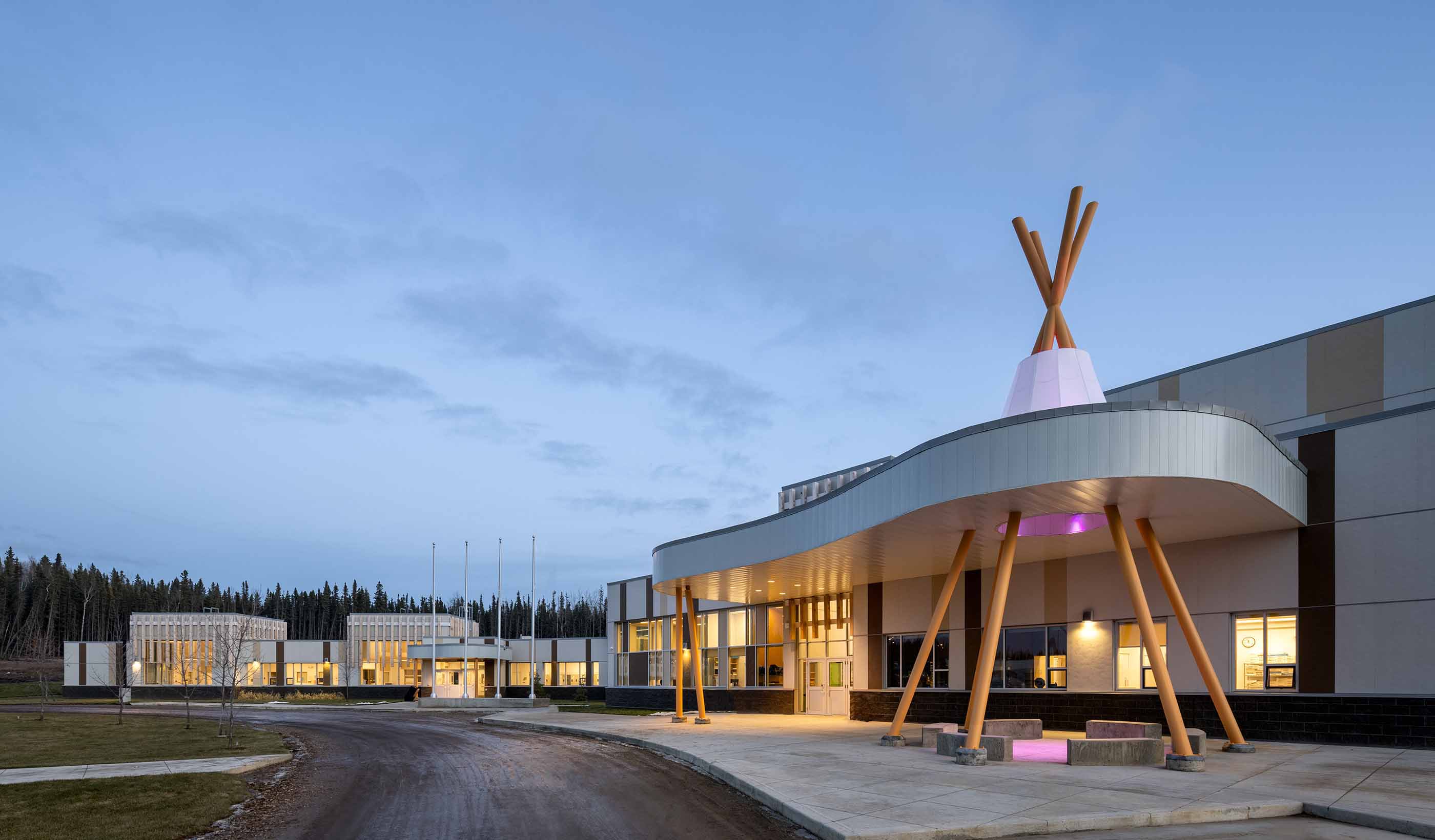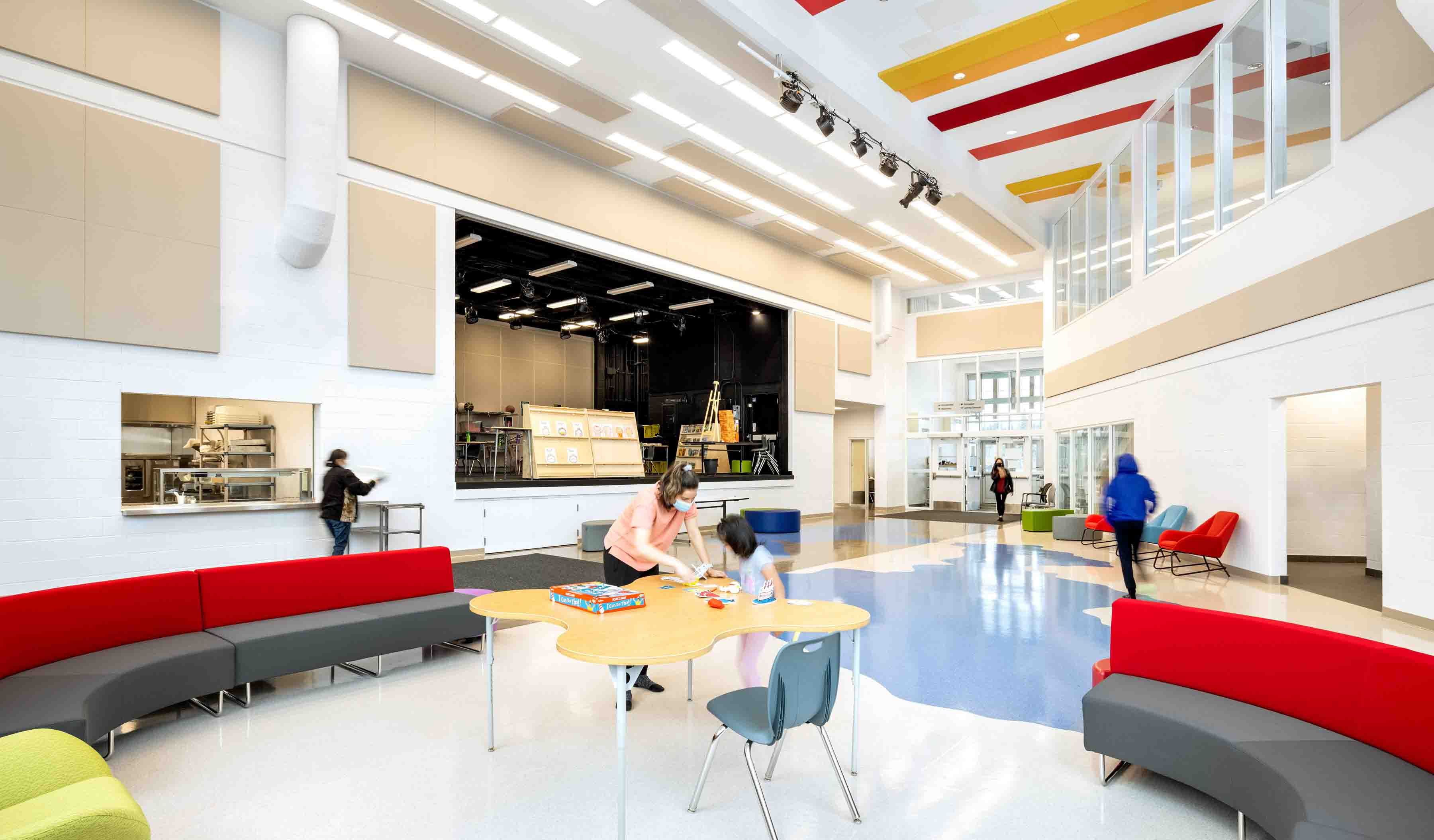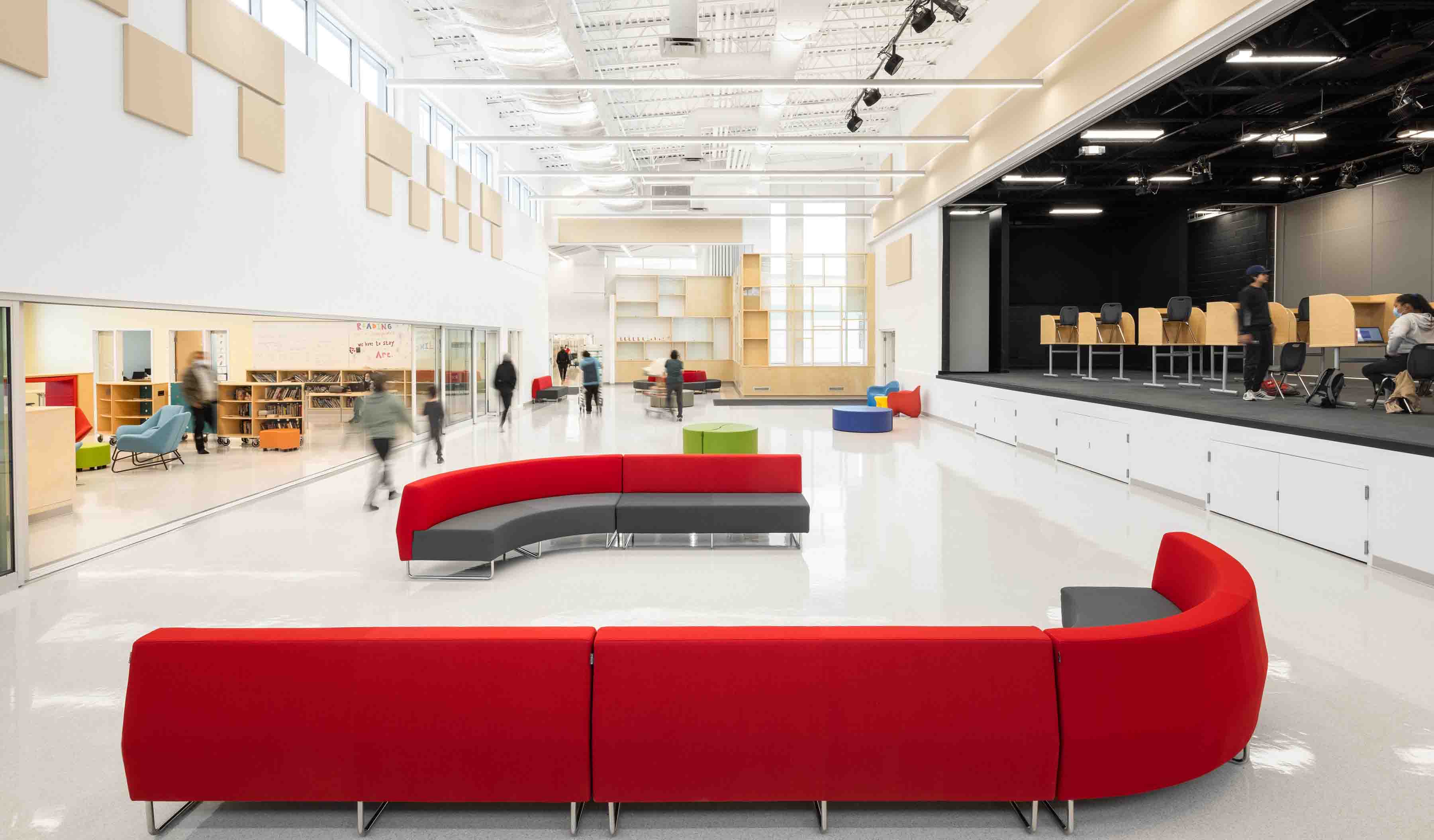First Nations school design case study: Listen, learn, then design
November 19, 2021
November 19, 2021
From Chief and Council to students: Understanding the communities’ history and needs is the key to impactful design at Peerless Lake and Trout Lake
Environments that help foster a positive learning environment for youths transform the future of education. Our team is passionate about designing schools that do just that. We teamed up with Alberta Infrastructure to design two new schools at Peerless Lake and Trout Lake. By investing time to truly understand both the student and local resident needs, we were able to design with community in mind.
Peerless Lake and Trout Lake are two remote sister communities in northern Alberta that, together, are Peerless Trout First Nation. Both schools were built in the early 1980s and were identified for replacement. This generated the opportunity to create a place for more than just education but for cultural learning and community gatherings.

Exterior of the Peerless Lake School (now known as Elizabeth Quintal School).
Getting to know community needs prior to starting the design is a key element of success in school projects. Having in-depth conversations with local residents allows for an easier understanding of why the project is taking place and how to meet goals. Heading into this project in early 2016, we had already designed Peerless Trout First Nation’s administration building. However, we wanted to dive deeper to truly get to know these lake communities.
To gain feedback, we travelled to Peerless Lake. Instead of arriving with a business initiative, we simply wanted to get to know the community and have them to get to know us. We kept an open mind and were ready to listen to the perspectives of the community members.
One of the highlights of this process was hearing from the students. We hosted engagement activities where students learned about building structures using toothpicks and marshmallows. While the students created different structures, we got them thinking about what they wanted to see in their new school. Some requests included more windows, as the current school had a few small windows that were covered over. One student wanted a second story, as all the community buildings were one level, and they wanted a school with stairs. There were also some fun requests, like a hot tub or a trampoline park.
Working closely with the Chief and Council, Elders, and the larger community, we learned about the community history and their experiences with education. They described walking down long, closed-in hallways with classrooms on both sides. They explained how this design felt dark and institutional—it was not a feeling that they wanted replicated. Listening to the students, Elders, and other user groups brought a new level of understanding of the communities and their histories, which we incorporated into the design.

Atrium of the Peerless Lake School (now known as Elizabeth Quintal School), featuring a second story loft inspired by a student’s suggestion.
Having this opportunity to speak to the community allowed us to understand that a standard school design was not fit for this project. We wanted to give residents two schools designed by them, for them—schools they would be proud to have in their communities.
Applying feedback to the Peerless Lake School (now known as Elizabeth Quintal School), we created a design where students enter the school walking past a teepee. This feature is an acknowledgment to their past. Inside, a large map of the local area and lakes was integrated into the floor. The idea behind this design was to allow students to find where they live on their community map. Along with this, our design needed to help prepare students for life outside of their community in other post-secondary institutions. Imagine going your whole childhood without using a staircase and trying to adjust to life in an urban college campus. While this may sound standard to most communities, there are no multi-story buildings in Peerless and Trout Lake. So, when a student told us that they wanted to know what it would be like to have stairs, we took the student’s feedback and created a second floor, helping to bridge the gap between their home and the opportunity beyond.
Our team also designed the Trout Lake School, which includes the Northern Lakes College as well.
The community encourages lifelong learning and when the opportunity for a new school came along, all parties agreed there were good synergies and efficiencies to house them in the future school. Northern Lakes College was invited to participate in the design charettes and community workshops to make sure the spaces, connections, and synergies would allow the learning environment to thrive.
A birch canoe entrance was implemented to celebrate the community’s fishing and hunting history, along with it being a symbol of shelter. Outside of the school there is a garden area that could be used for community events, such as graduations.
Listening to the students, Elders, and other user groups brought a new level of understanding of the communities and their histories, which we incorporated into the design.
Both schools featured outdoor space for teaching along with landscaped, natural-play structures. Indoors, the team included lots of flexible spaces, curved hallways, and windows. Using design to create efficiencies, the team placed the library next to the reception desk. This allows the library to always be open. The school receptionist could have a dual role as a librarian, which addresses a previous issue in both schools.
The schools were also designed for the community to host events from weddings to other large gatherings. This allows the buildings to be used beyond school hours. For traditional learning, we included a clean lab for rendering moose after a hunt, a commercial kitchen in each school, and open event spaces.

Atrium of the Trout Lake School.
In consulting, our project schedules don’t usually allow for us to get to know the community to this degree. However, having the chance to learn about the communities was the key to success. When a student asks for a staircase to a second floor, most people would think “that’s cute.” But our team took the feedback seriously. Listening to the community added value to the design and to the learning environment.
Prior to the schools opening, the communities saw only a 33% rate of students attending classes. After both the Peerless Lake and Trout Lake schools opened in March 2020, the schools saw a 90% attendance rate at the end of the school year, despite the impact of COVID-19. There are many factors that contributed to this drastic change in attendance. We’d like to think that the school design played a large part. Adding this type of value to education systems sets students up for success in the future. By providing a setting that improves the quality of learning, we also improve the quality of the future of students.
Thank you—Ninaskomtin—Miigwetch—to the Peerless Trout First Nation for their hospitality and support while designing these schools. We really couldn’t achieve these designs without you.